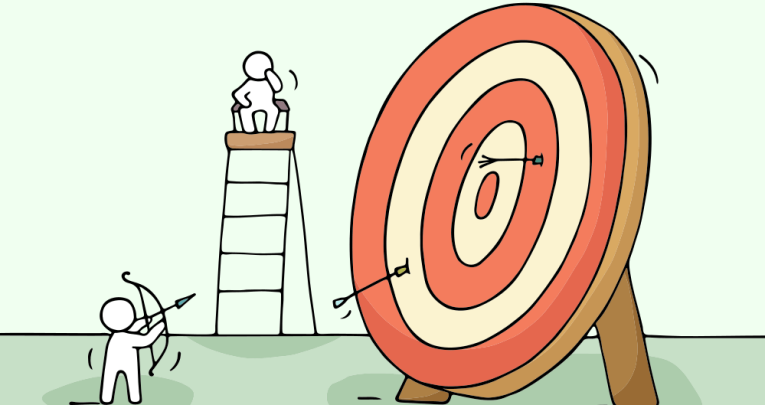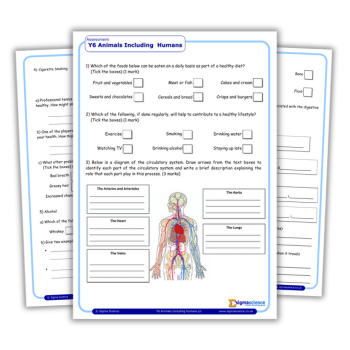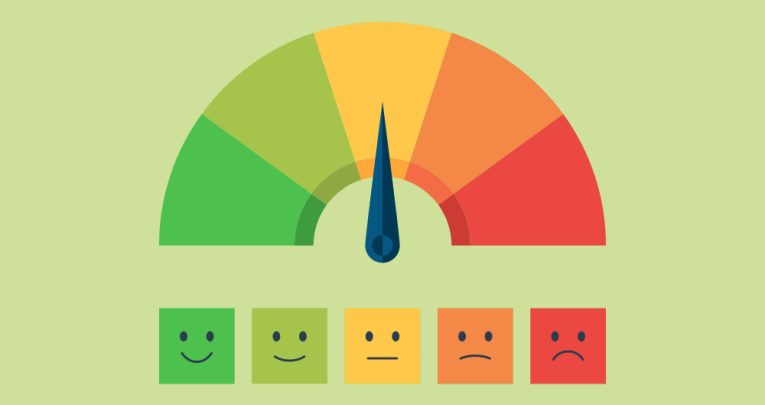Are Targets Setting High Standards or Limiting Students’ Learning?

Telling young people where they should be at the end of any educational journey is a sure-fire way to put a ceiling on their learning, argues Alex Standish…

- by Dr Alex Standish
- Associate professor of geography education at UCL Institute of Education

Like many institutions today, schools and universities are infused with a culture of working to targets.
In initial teacher education, for example, there are expectations for how many student teachers must achieve ‘outstanding’ each year.
Individuals are given targets to meet as they work towards reaching the eight Teaching Standards, each of which is broken down into two or three statements. Their ‘progress’ towards the standards is tracked and measured.
Schools themselves have targets for examination outcomes. Pupils are given individual targets in each subject on which to focus their attention: “I am working on my connectives,” my daughter informs me about her English class.
Learners have targets for what ‘level’ they should reach at each Key Stage, and for GCSEs.
Nearly all lessons have pre-determined learning objectives – what students should know or be able to do by the end of the session.
And as a part of this, formulaic teaching practices, such as working to mark schemes, can reduce the educational experience to little more than jumping through hoops.
Negative impact
A 2014 survey by the Association of Teachers and Lecturers found that 40 percent of school and college staff (944 respondents) felt that targets have a negative effect on students’ enthusiasm for learning, while 54 percent saw them as having a negative impact on the quality of teaching.
A further 60 percent reported that targets encouraged them to teach to the test, meaning students miss out on ‘creativity, communication skills and collaboration’ (ATL 2014).
“Pre-targets, my students left school as well-rounded individuals with skills that prepared them for the next stage of their lives; now they leave with a qualification,” reported one teacher (ATL 2014).
Target-setting is part of a wider shift in education towards what Steven Ward (2012) calls the New Managerialism, importing practices derived from business and management.
But, as most teachers know only too well, working to targets is more akin to training than education. The former is output-driven, involving the measurement of competences, while education is input-driven and by definition open-ended.
An example should help to clarify the difference…
Means and ends
In an excellent article ‘Time to Stop PEE-ing?’, English teacher Louisa Enstone (2017) describes how one day she was caught unawares by a question from a student: “Why do we write essays, Miss?”
This got Enstone thinking and she set up an experiment in which she taught one class essay-writing using the rubric Point, Evidence, Explanation and the other without, monitoring their progress over the course of a year.
Initially, the PEE class fared much better and achieved higher grades. However, towards the end of the year their performance had plateaued, while in the free-writing class the ideas flowed, their writing was imaginative, and their marks superior. Why such a difference?
When pupils are taught to work towards predetermined outcomes, or to follow a rubric, there is a danger that this becomes the end, rather than a means to writing a great essay.
By following guidelines they may attain reasonable marks – but because the ends have been specified by the teacher the pupils may be denied the opportunity to develop their own capacity for judging what quality writing looks like.
In the free-writing group “Each individual pupil then made their own judgement as to which elements of the essay content and essay write-up they wished to use” (Enstone 2017).
In other words, what matters is the student’s knowledge of the subject and their capacity to use and apply that knowledge. They need to learn what it means to think in a given discipline or to unlock its code.
Open exploration
This is not news to most teachers. Indeed, in 1970 educationalist Lawrence Stenhouse was cautioning teachers about the pitfalls of objectives-led teaching.
Stenhouse suggested that when the teacher works towards predetermined “changes in thoughts, actions or feelings of students” this potentially “reduces content in education to an instrumental role” (1970, 74).
Instead, he advocated for an open exploration of knowledge in the classroom: “Disciplines allow us to specify input rather than output in the educational process.
This is fairer to the needs of the individual students because, relative to objectives, disciplined content is liberating to the individual” (Ibid, 77).
What he meant by ‘liberating to the individual’ is that “It places knowledge at the disposal of the student, given that he learns its standards and principles” (Ibid, 77).
I don’t think that this means we need to reject outright learning objectives or rubrics like PEE – there is a good debate to be had about when objectives are and aren’t appropriate for teaching.
What matters is that the classroom is a space for open intellectual enquiry and that teachers allow for the non-linear nature of learning.
When I am teaching a new concept like ‘drainage basin’ in geography my objective may well be for all pupils to develop an accurate conception of what this looks like.
And, in mathematics we want pupils to learn its rules, such as that an equilateral triangle has three equal sides.
Subjective interpretation
But, because children are subjective beings and bring their own experiences of rivers to the classroom I must recognise that there will be some differences in their understanding of the concept ‘drainage basin’ and how they apply this in the real world.
This is especially true for learning the arts where aesthetics involves a subjective experience with the object of study.
“The content of a work of art cannot be reduced to students’ behaviours”, suggests Stenhouse (1970, 75). The point is that disciplinary knowledge (content) should become a resource for young people to think and interpret the world around them, “rather than trapping [them] in objectives conceived by [their] teacher” (Ibid, 77) – or getting pupils to jump through hoops for the short-term goals of performance indicators and passing exams.
Finally, I should add that the ATL survey also noted the increased anxiety of both teachers and young people associated with the target-driven culture in schools.
While this response could be conceived as part of a growing trend towards a focus on mental wellbeing, it should also be interpreted as a consequence of the elevated significance of student attainment.
Pupils’ grades are no longer just about how well they have done in class and exams. When they are used to measure the performance of teachers and schools is it any wonder that educators put more pressure on learners – and that the learners know it?
Alex Standish is senior lecturer in geography education/subject leader for geography PGCE, UCL Institute of Education, and co-editor of the book What Should Schools Teach? Disciplines, Subjects and the Pursuit of Truth (UCL IOE Press).
The Academy of Ideas Education Forum gathers monthly to discuss trends in education policy, theory and practice. For tickets and details of future events, visit academyofideas.org.uk/forums/education_forum.










